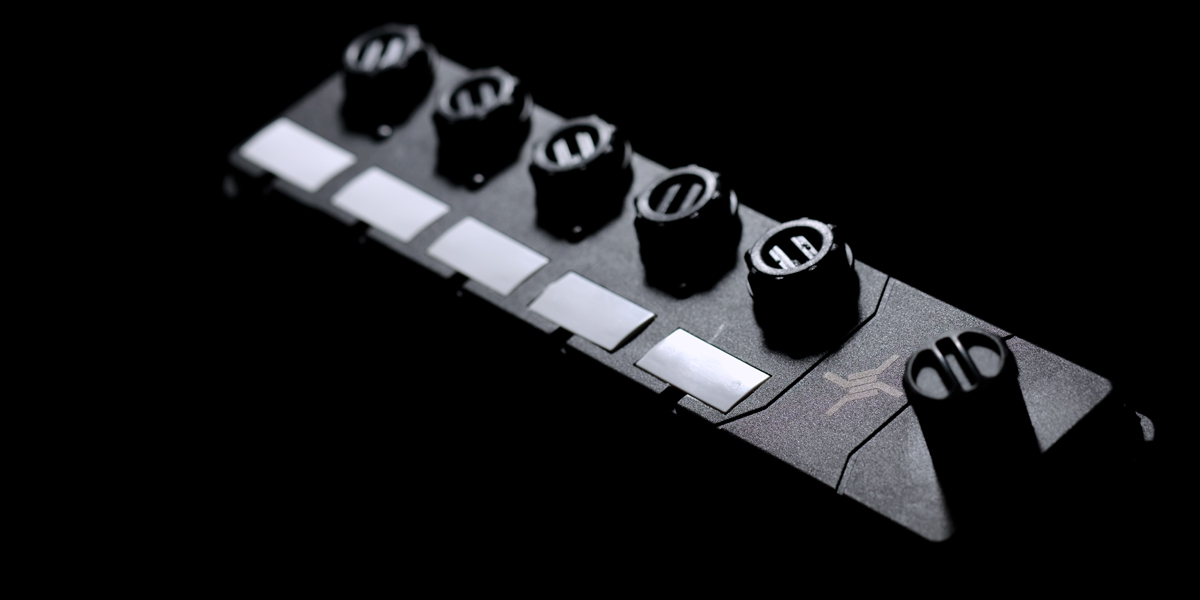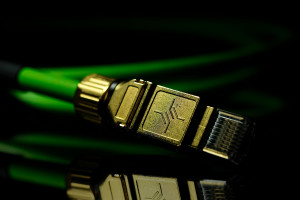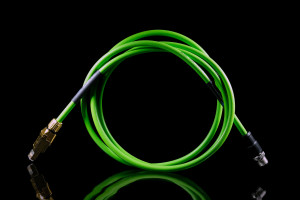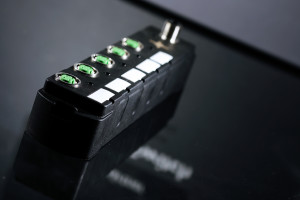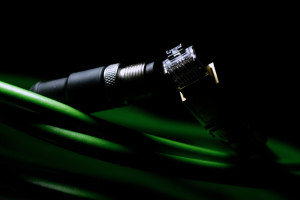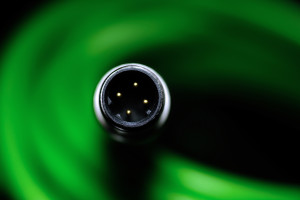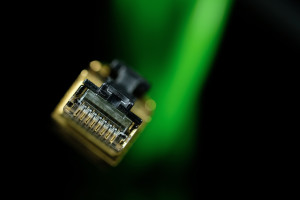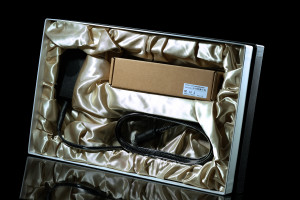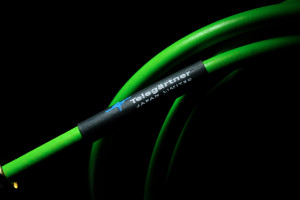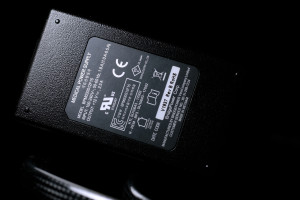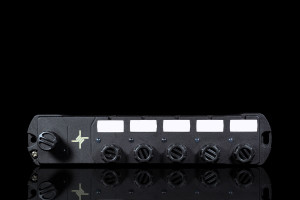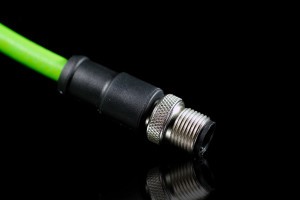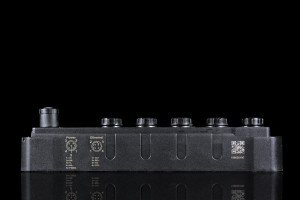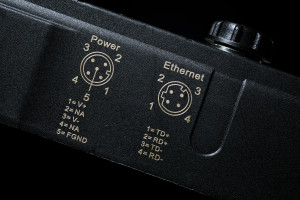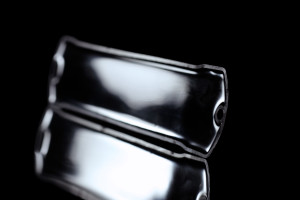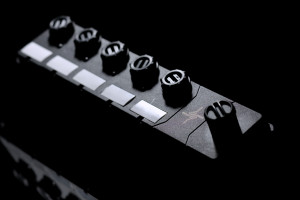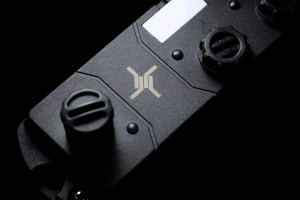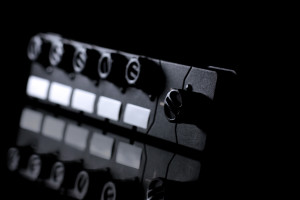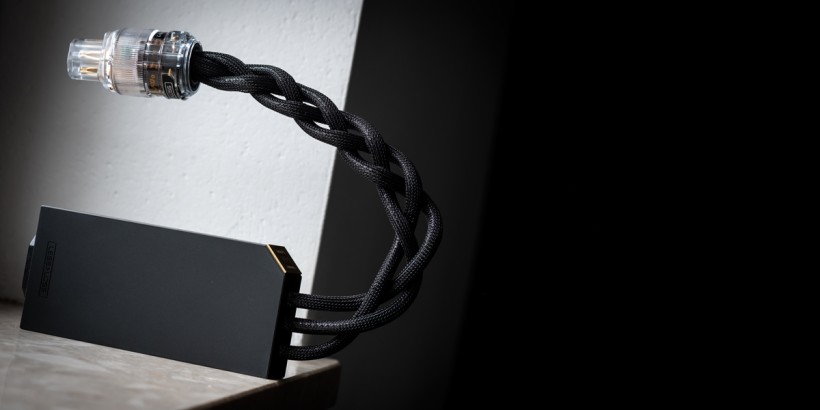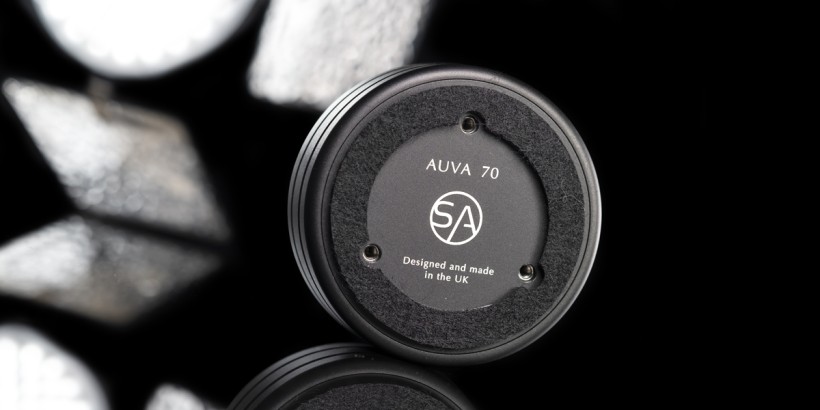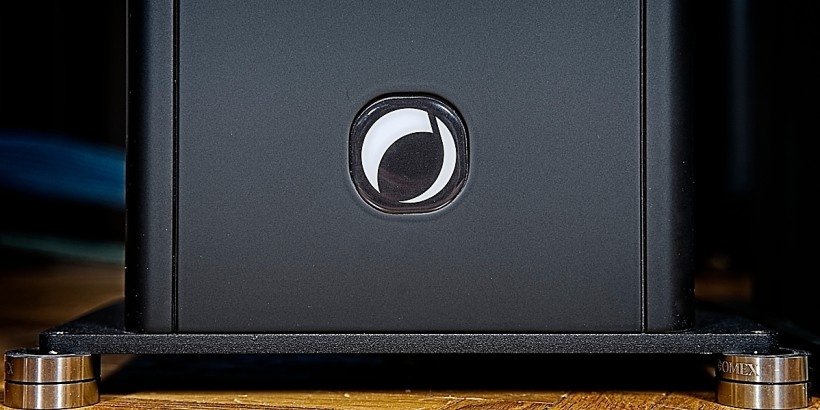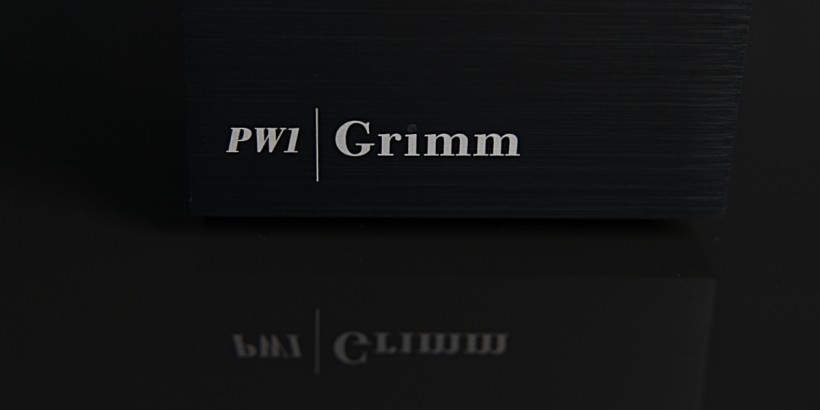Several years back just a thought about audiophile network components would tickle many enthusiasts, however that’s not the case today. To find out why LAN devices such as this report’s Telegärtner M12 Switch Magic are getting more and more popular is my job, so here we are. Enjoy!
Introduction
Audio is quite straightforward early on, it honestly doesn’t take much to start in this hobby. However the deeper one decides to go, the more layers out there just await to be discovered. The search for new items to up the sonic ante can take an unaware consumer to truly odd places not occupied by the usual suspects; speakers, amps, sources etc. This very much bottomless non-mainstream area free from such goods is what today’s undeniably unusual product calls home. It’s a network switch. Truth told, many people would struggle to view it as audio related hardware to begin with, let alone a proper audiophile tool. If you’ve been wondering whether such an item is capable of fitting this description, worry not. This review’s goal is to address this matter.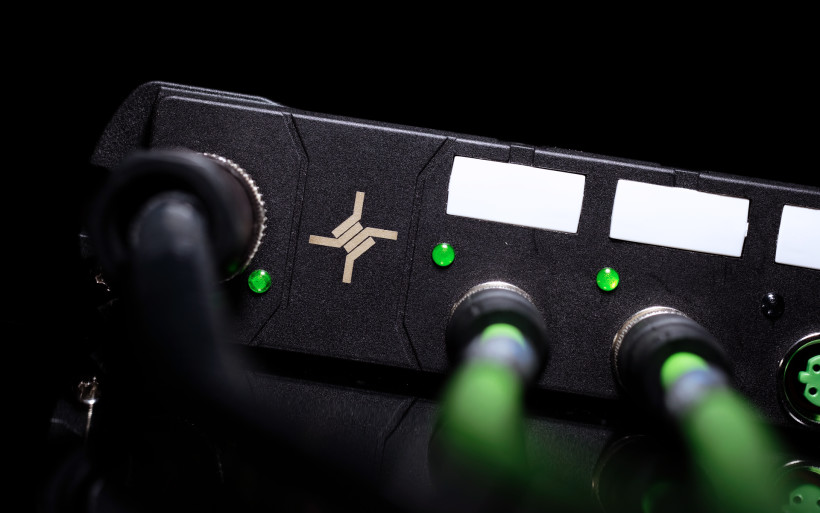 Today’s assignment would’ve been quite the step outside of my own comfort zone not more than several months ago. It tackles a very specific network related subject, which many individuals would view as not associated with sound quality at all. Routers along with smartphones or tablets create handy wirelessly operated UI schemes, hence are nothing more than convenient LAN providers not directly involved in audio playback. Put shortly, in most network based audio environments music stream doesn’t run through routers, and that’s why it seems quite commonsensical to label them as devices not capable of impacting sound quality in any way. My mind was set like so for years, all this simply added up on paper. Then familiarity with one inconspicuous item in late 2018 was all it took to understand how inaccurate my view was.
Today’s assignment would’ve been quite the step outside of my own comfort zone not more than several months ago. It tackles a very specific network related subject, which many individuals would view as not associated with sound quality at all. Routers along with smartphones or tablets create handy wirelessly operated UI schemes, hence are nothing more than convenient LAN providers not directly involved in audio playback. Put shortly, in most network based audio environments music stream doesn’t run through routers, and that’s why it seems quite commonsensical to label them as devices not capable of impacting sound quality in any way. My mind was set like so for years, all this simply added up on paper. Then familiarity with one inconspicuous item in late 2018 was all it took to understand how inaccurate my view was.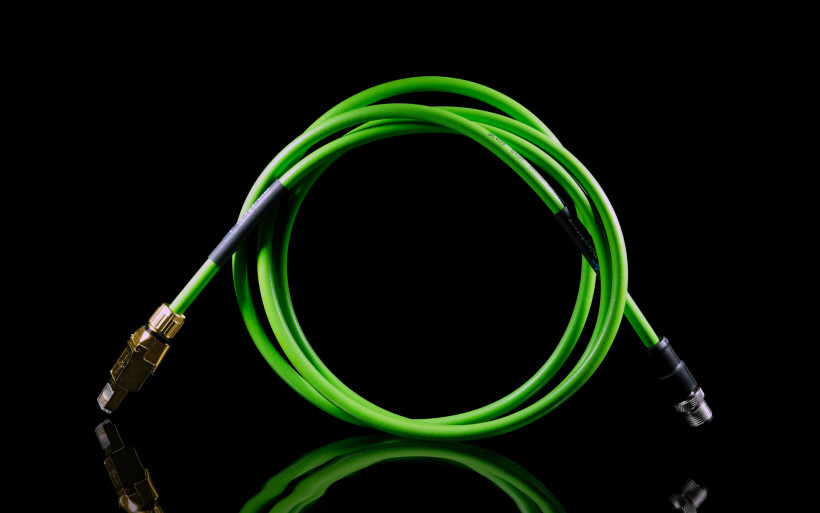 Let’s backtrack to the fidata HFLC network cable reviewed here. This particular item’s impact on my setup’s performance was very audible, which left me puzzled at first. Eventually all pieces formed a picture which made a lot of sense; the old SMPS-powered Linksys WRT160N router passed its electrical noise through direct connection with fidata’s HFAS1-XS20U storage/streamer, whereas the same manufacturer’s HFLC leash kept the contamination at bay to an audible degree. In spite of its usage scenario not optimal in my review, the Japanese cable on duty was surprisingly potent. This quite intense and educational experience not only proved me yet again that in audio everything matters, connections not crucial and far from an audio chain included, but also incentivized me to pursue more network components in the future. Today’s the day.
Let’s backtrack to the fidata HFLC network cable reviewed here. This particular item’s impact on my setup’s performance was very audible, which left me puzzled at first. Eventually all pieces formed a picture which made a lot of sense; the old SMPS-powered Linksys WRT160N router passed its electrical noise through direct connection with fidata’s HFAS1-XS20U storage/streamer, whereas the same manufacturer’s HFLC leash kept the contamination at bay to an audible degree. In spite of its usage scenario not optimal in my review, the Japanese cable on duty was surprisingly potent. This quite intense and educational experience not only proved me yet again that in audio everything matters, connections not crucial and far from an audio chain included, but also incentivized me to pursue more network components in the future. Today’s the day.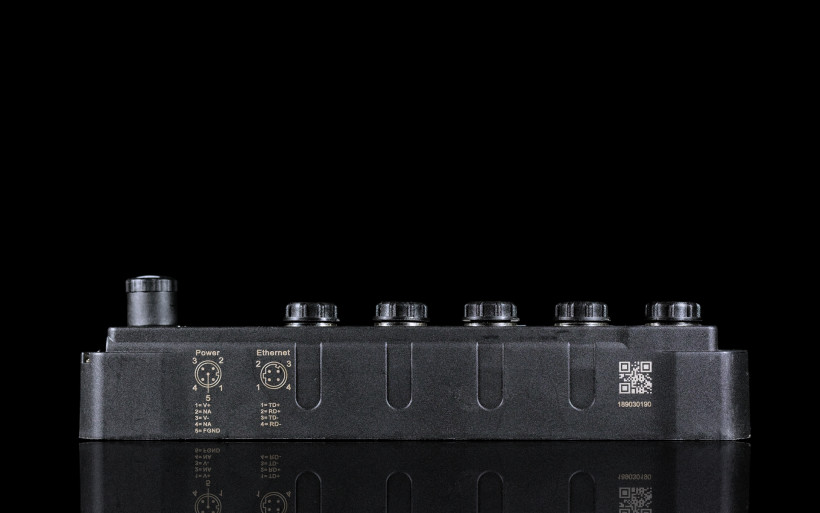 This review wouldn’t have happened without Marcin Ostapowicz, the owner of JCAT and JPLAY brands. He carved himself quite the career in the audio industry via efficient crusade against culprits associated with files based playback. Marcin started years ago when this subject was still niche, has been operational ever since and it’s safe to say that his work cleared the way for many other audio businesses. Interestingly, the JCAT portfolio doesn’t sport many items other than our engineer’s own. When he asked about my interest in Telegärtner M12 Switch Magic, I was game. This network component had my instant attention due to reasons explained above, but Marcin’s unshaken confidence in it topped via mysterious grin was the true enabler.
This review wouldn’t have happened without Marcin Ostapowicz, the owner of JCAT and JPLAY brands. He carved himself quite the career in the audio industry via efficient crusade against culprits associated with files based playback. Marcin started years ago when this subject was still niche, has been operational ever since and it’s safe to say that his work cleared the way for many other audio businesses. Interestingly, the JCAT portfolio doesn’t sport many items other than our engineer’s own. When he asked about my interest in Telegärtner M12 Switch Magic, I was game. This network component had my instant attention due to reasons explained above, but Marcin’s unshaken confidence in it topped via mysterious grin was the true enabler.
Build
The German Telegärtner company specializes in various connectors, network solutions, CNC work, injection moulds and alike. One quick glimpse at this operation’s site is all it takes to understand that any affiliations with the audio industry are highly unlikely, and the same story is with its Japanese subsidiary – Telegärtner Japan Limited. However, several items in the latter’s offer Marcin has found impressive enough to become its distributor outside of Japan. Knowing him, he had to have a good reason.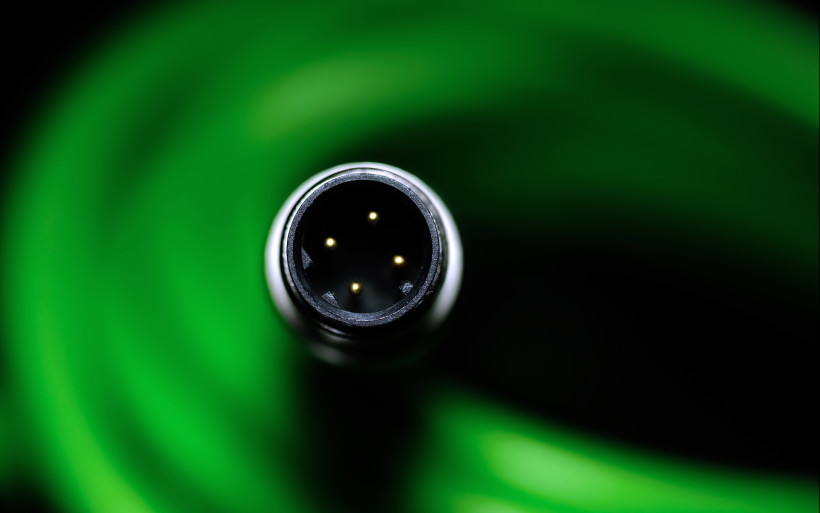 To quote Wikipedia’s description, a network switch “…is a computer networking device that connects devices on a computer network by using packet switching to receive, process, and forward data to the destination device.”. Put shortly, such goods switch network signal between products connected to them, which is a fairly simple cost-effective job many routers can handle. Telegärtner’s network switches serve this purpose exactly yet are anything but affordable, hence it’s fair to ask why one would spend €4’165 (M12 Switch Gold) or €2’550 (M12 Switch Magic) for such hardware. If switching functionality and crave for extra boxes plus cables are all off the table, what’s left is sound quality increase. That’s the only realistic upshot if a product does what it’s supposed to and well enough to justify its steep asking price. Incidentally it’s also the only reason an upgrade hungry audiophile might be after such hardware.
To quote Wikipedia’s description, a network switch “…is a computer networking device that connects devices on a computer network by using packet switching to receive, process, and forward data to the destination device.”. Put shortly, such goods switch network signal between products connected to them, which is a fairly simple cost-effective job many routers can handle. Telegärtner’s network switches serve this purpose exactly yet are anything but affordable, hence it’s fair to ask why one would spend €4’165 (M12 Switch Gold) or €2’550 (M12 Switch Magic) for such hardware. If switching functionality and crave for extra boxes plus cables are all off the table, what’s left is sound quality increase. That’s the only realistic upshot if a product does what it’s supposed to and well enough to justify its steep asking price. Incidentally it’s also the only reason an upgrade hungry audiophile might be after such hardware. I was told that this writing’s hero not only switches network signal better than routers, but also has its own reclocking scheme inside and was designed to be as EMI/RFI/vibration resilient as possible. Come to think of it, USB products with these aspects in check are known to improve sound quality rather well, whereas Telegärtner’s smaller M12 machine is here to execute the same stunt in LAN environment. When asked about what it actually is, a noise killing mini PC optimized for network switching was Marcin’s explanation, though the man has no idea what’s exactly under this item’s hood. Not one living soul outside of Telegärtner has this knowledge. Whatever it might be, it’s of active and not passive sort.
I was told that this writing’s hero not only switches network signal better than routers, but also has its own reclocking scheme inside and was designed to be as EMI/RFI/vibration resilient as possible. Come to think of it, USB products with these aspects in check are known to improve sound quality rather well, whereas Telegärtner’s smaller M12 machine is here to execute the same stunt in LAN environment. When asked about what it actually is, a noise killing mini PC optimized for network switching was Marcin’s explanation, though the man has no idea what’s exactly under this item’s hood. Not one living soul outside of Telegärtner has this knowledge. Whatever it might be, it’s of active and not passive sort.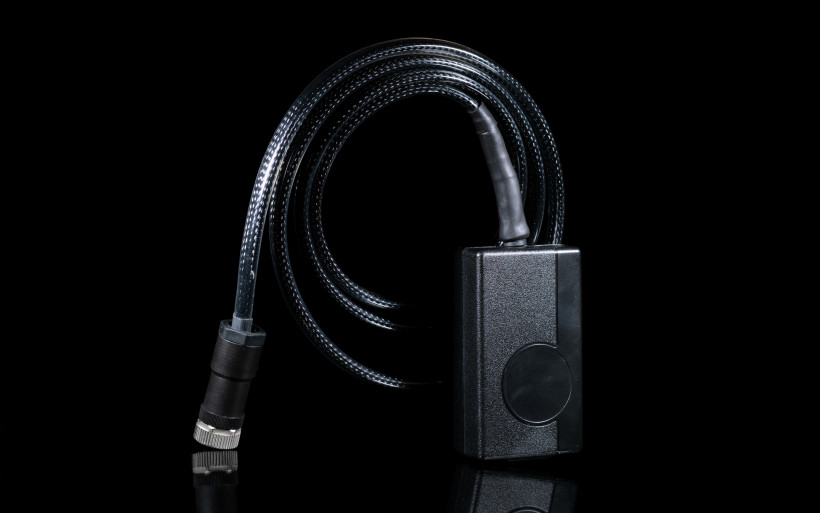 The main dish arrived dressed in nice cardboard filled with silk alike material. The only extra item found inside was a medical grade switching PSU made by BridgePower Corp, loaded with an IEC inlet and a 1.5m long tail finished with Telegärtner’s proprietary M12-A plug. The complete M12 Switch Magic set also includes two extra boxes with 2.0m long RJ45 network cables designed to work with the main product. Each green leash is terminated with the same manufacturer’s own 4-pin M12-D connector on one end and fabulous MFP8 IE GOLD plug on the other. The very same RJ45 critter is found in fidata’s HFLC cable and its previous version NASA has been using at the ISS, which is undoubtedly something for the Telegärtner crew to be proud of.
The main dish arrived dressed in nice cardboard filled with silk alike material. The only extra item found inside was a medical grade switching PSU made by BridgePower Corp, loaded with an IEC inlet and a 1.5m long tail finished with Telegärtner’s proprietary M12-A plug. The complete M12 Switch Magic set also includes two extra boxes with 2.0m long RJ45 network cables designed to work with the main product. Each green leash is terminated with the same manufacturer’s own 4-pin M12-D connector on one end and fabulous MFP8 IE GOLD plug on the other. The very same RJ45 critter is found in fidata’s HFLC cable and its previous version NASA has been using at the ISS, which is undoubtedly something for the Telegärtner crew to be proud of.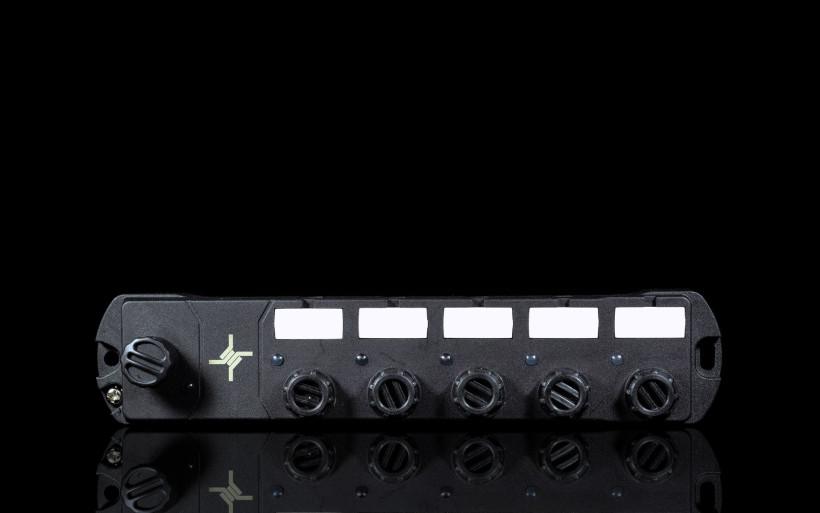 All cables sent to me were nicely assembled but held no jewelry status, far from it. It was quite clear that these were made to do the job with no visual bling involved and that’s perfectly fine in my privy book. Truth told, their nice foam and silk filled packaging was quite the surprise considering Telegärtner’s profile.
All cables sent to me were nicely assembled but held no jewelry status, far from it. It was quite clear that these were made to do the job with no visual bling involved and that’s perfectly fine in my privy book. Truth told, their nice foam and silk filled packaging was quite the surprise considering Telegärtner’s profile. The network switch itself weighs 280g and measures (L x W x H) 188x40x42mm, hence is petite yet pleasantly substantial on hand. Its one-piece enclosure made of very robust plastic alike material highly likely was filled with some resin to reinforce internal structure and decrease vibrations. This guesswork is based on utmost solid feel of the product and its nicely polished sealed underbelly, which also gives a valid reason to think that the M12 Switch Magic was built to last a lifetime and most likely not repaired but replaced in the event of failure.
The network switch itself weighs 280g and measures (L x W x H) 188x40x42mm, hence is petite yet pleasantly substantial on hand. Its one-piece enclosure made of very robust plastic alike material highly likely was filled with some resin to reinforce internal structure and decrease vibrations. This guesswork is based on utmost solid feel of the product and its nicely polished sealed underbelly, which also gives a valid reason to think that the M12 Switch Magic was built to last a lifetime and most likely not repaired but replaced in the event of failure.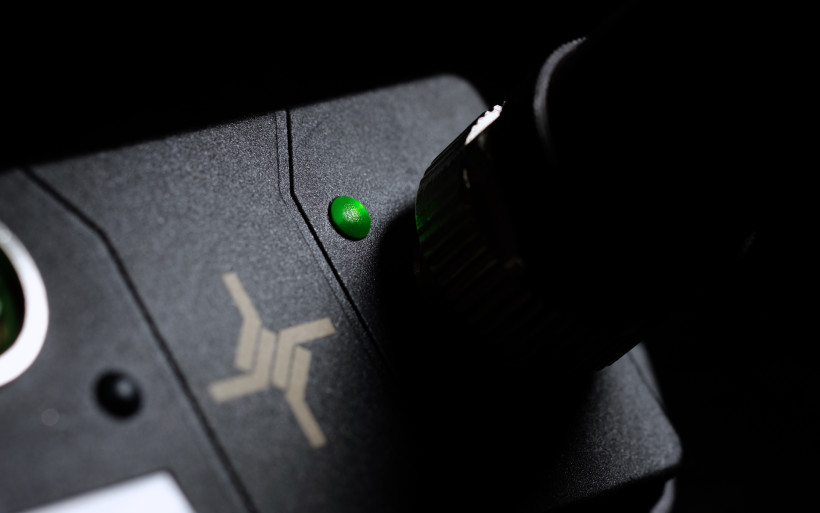 The product’s top is occupied by one M12-A power socket and four M12-D network in/outs in total. LEDs neighbouring with all these go green once the device is powered, however logically only those with connections detected. I haven’t got the faintest what white rectangles found nearby do. The switch’s enclosure also has one opening per side to fix it to a flat surface and a grounding pin on one end. It goes without saying that the M12 Switch Magic won’t accept regular RJ45 cables due to unusual sockets. All are threaded and so are matched plugs on included cables to make connections as firm and quiet as possible. The manufacturer provided thick caps for all ports, hence those off duty were covered.
The product’s top is occupied by one M12-A power socket and four M12-D network in/outs in total. LEDs neighbouring with all these go green once the device is powered, however logically only those with connections detected. I haven’t got the faintest what white rectangles found nearby do. The switch’s enclosure also has one opening per side to fix it to a flat surface and a grounding pin on one end. It goes without saying that the M12 Switch Magic won’t accept regular RJ45 cables due to unusual sockets. All are threaded and so are matched plugs on included cables to make connections as firm and quiet as possible. The manufacturer provided thick caps for all ports, hence those off duty were covered.
Sound
Telegärtner M12 Switch Magic was used in-between my Linksys WRT-160N router and fidata HFAS-S10U on storage/transport duty as per usual. From there LampizatOr Pacific DAC (KR Audio T-100 + KR Audio 5U4G Ltd. Ed.) took over to pass the signal to the C-2150 and P-4500 team by Accuphase and then to my Boenicke W8.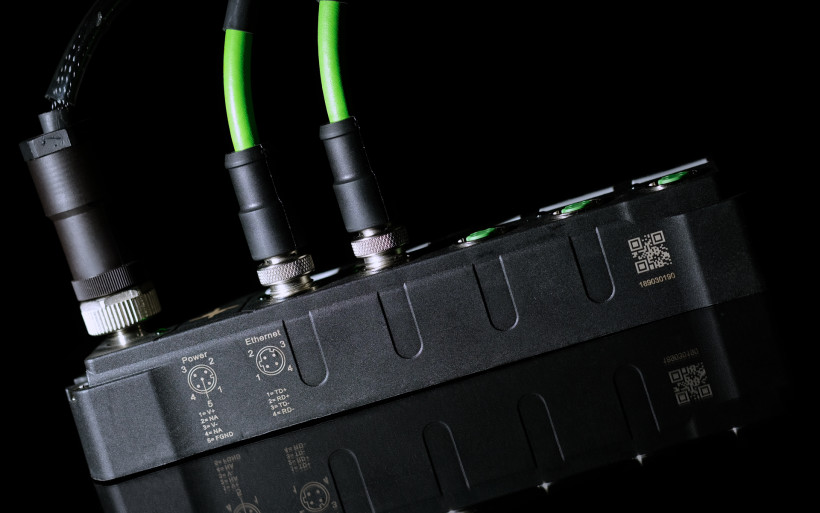 The network setup was utmost easy due to the M12 Switch Magic’s plug&play nature. Even a person completely not LAN-savvy will handle this product. Two green RJ45 cables fixed in either of 4-pin sockets on the M12’s top, the PSU’s 5-pin end in the obvious place and presto, three LEDs lit up in total indicated the product’s full readiness. From there one MFP8 IE GOLD plug went into my router’s LAN out, the other to my fidata’s network in and that was it. Easy-peasy. The goal was to conveniently switch back and forth between the Japanese item and a regular RJ45 throwaway of 1m length, and do so as many times as needed to form a meaningful and firm opinion without second guesses involved. It didn’t take long to have one, not at all.
The network setup was utmost easy due to the M12 Switch Magic’s plug&play nature. Even a person completely not LAN-savvy will handle this product. Two green RJ45 cables fixed in either of 4-pin sockets on the M12’s top, the PSU’s 5-pin end in the obvious place and presto, three LEDs lit up in total indicated the product’s full readiness. From there one MFP8 IE GOLD plug went into my router’s LAN out, the other to my fidata’s network in and that was it. Easy-peasy. The goal was to conveniently switch back and forth between the Japanese item and a regular RJ45 throwaway of 1m length, and do so as many times as needed to form a meaningful and firm opinion without second guesses involved. It didn’t take long to have one, not at all.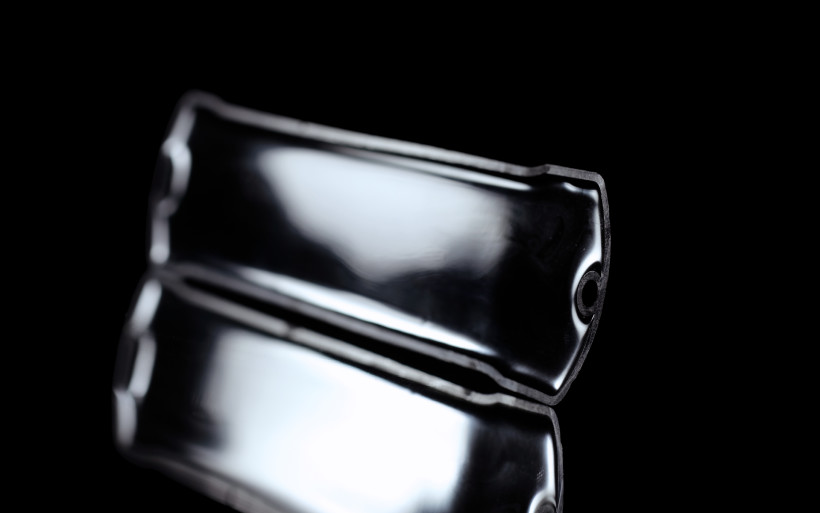 Each change the fidata HFLC cable introduced was fairly small, however all these combined netted result which was audible, significant and along the well-known lines of a cleaner, more refined, precise, liquid and easygoing performance in general. With this experience on mind, I already had a hunch what to expect of the M12 switch. I wasn’t wrong, the fact that this small box very easily bested the regular RJ45 throwaway regardless of repertoire didn’t arrive as a shocker. I’ve been there and have heard that already. But the Japanese item’s overall potency was in fact new, all key changes it introduced were anything but small.
Each change the fidata HFLC cable introduced was fairly small, however all these combined netted result which was audible, significant and along the well-known lines of a cleaner, more refined, precise, liquid and easygoing performance in general. With this experience on mind, I already had a hunch what to expect of the M12 switch. I wasn’t wrong, the fact that this small box very easily bested the regular RJ45 throwaway regardless of repertoire didn’t arrive as a shocker. I’ve been there and have heard that already. But the Japanese item’s overall potency was in fact new, all key changes it introduced were anything but small.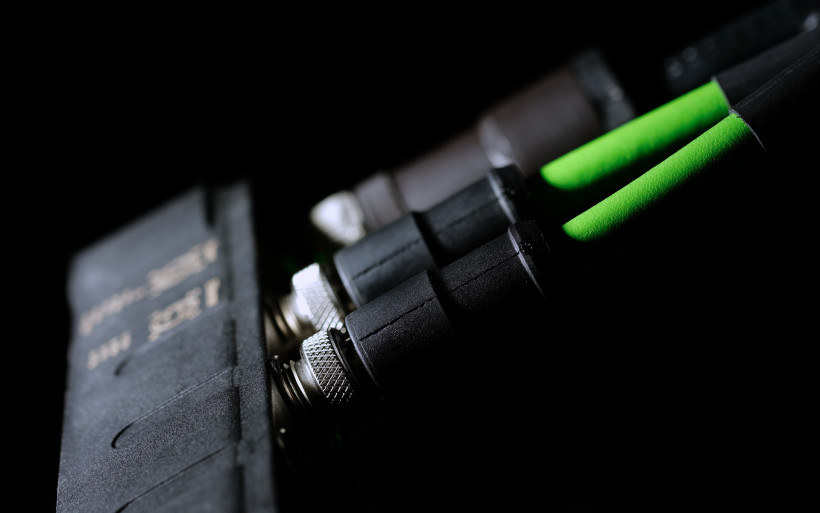 Just as it was the case with fidata’s LAN cable, several minutes was all it took to grasp what the M12 Switch Magic did, whereas everything that came afterwards served as reassurance in my early findings. Put shortly, the Japanese switch morphed this assignment into a breeze and highly enjoyable at that. No other words would do the justice in describing the ride this time around, but the general notion of sound shift was different in comparison to the HFLC leash. Several hours into auditioning today’s item, I started to notice its input as quite similar to what the recently reviewed GigaWatt PC-3 SE EVO+ did. The sensation wasn’t exactly alike, but somewhere in the same ballpark for sure.
Just as it was the case with fidata’s LAN cable, several minutes was all it took to grasp what the M12 Switch Magic did, whereas everything that came afterwards served as reassurance in my early findings. Put shortly, the Japanese switch morphed this assignment into a breeze and highly enjoyable at that. No other words would do the justice in describing the ride this time around, but the general notion of sound shift was different in comparison to the HFLC leash. Several hours into auditioning today’s item, I started to notice its input as quite similar to what the recently reviewed GigaWatt PC-3 SE EVO+ did. The sensation wasn’t exactly alike, but somewhere in the same ballpark for sure.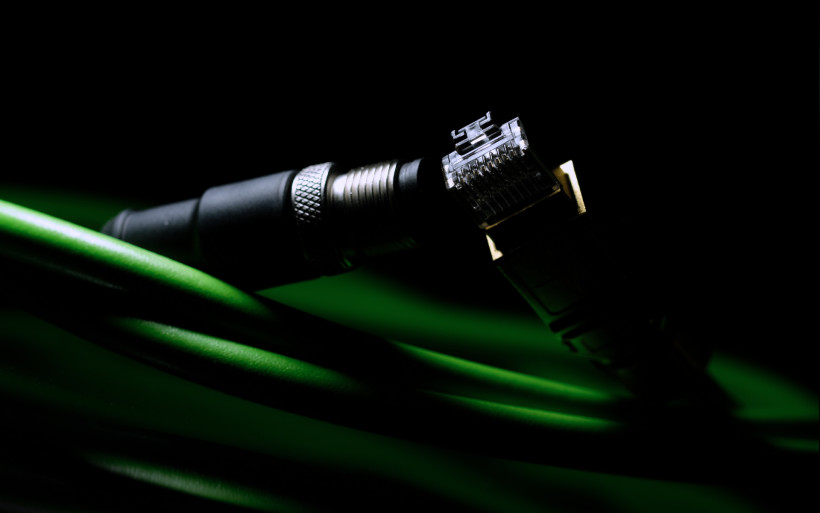 The M12 Switch Magic provided the same tidying service various other sorters do on different fronts. First of all, if there was any unintentional sharpness audible, the switch took this edge off, which resulted in slight roundness injection here and there. It made the view a bit softer and more delicate, less lit up and blunt. But one of the most important measures looked forward to was now pristinely dark musical backdrop. With the M12 engaged, any dust and grit found in there was, poof, gone. This procedure alone upped the ante on pretty much everything else; articulation, smoothness, vividness, resolution and clarity. Unsurprisingly it should, but most importantly all these positive successions were easily audible.
The M12 Switch Magic provided the same tidying service various other sorters do on different fronts. First of all, if there was any unintentional sharpness audible, the switch took this edge off, which resulted in slight roundness injection here and there. It made the view a bit softer and more delicate, less lit up and blunt. But one of the most important measures looked forward to was now pristinely dark musical backdrop. With the M12 engaged, any dust and grit found in there was, poof, gone. This procedure alone upped the ante on pretty much everything else; articulation, smoothness, vividness, resolution and clarity. Unsurprisingly it should, but most importantly all these positive successions were easily audible. The ordinary RJ45 on duty doesn’t spoil music significantly enough to strip it from pleasure, not even close. We’re still in the realm of audible yet not deal-making or breaking shifts. But even though most audio tweaks aren’t truly capable of introducing a night and day differences and the M12 Switch Magic isn’t any different on this count, I’ve found magnitude of its effectiveness quite funny at times. Let’s cast aside for a second the usual gremlins it got rid of just as a proper cleaner should, and shift focus to noticeable improvements in bass and imaging depth as that’s what truly caught me off guard.
The ordinary RJ45 on duty doesn’t spoil music significantly enough to strip it from pleasure, not even close. We’re still in the realm of audible yet not deal-making or breaking shifts. But even though most audio tweaks aren’t truly capable of introducing a night and day differences and the M12 Switch Magic isn’t any different on this count, I’ve found magnitude of its effectiveness quite funny at times. Let’s cast aside for a second the usual gremlins it got rid of just as a proper cleaner should, and shift focus to noticeable improvements in bass and imaging depth as that’s what truly caught me off guard.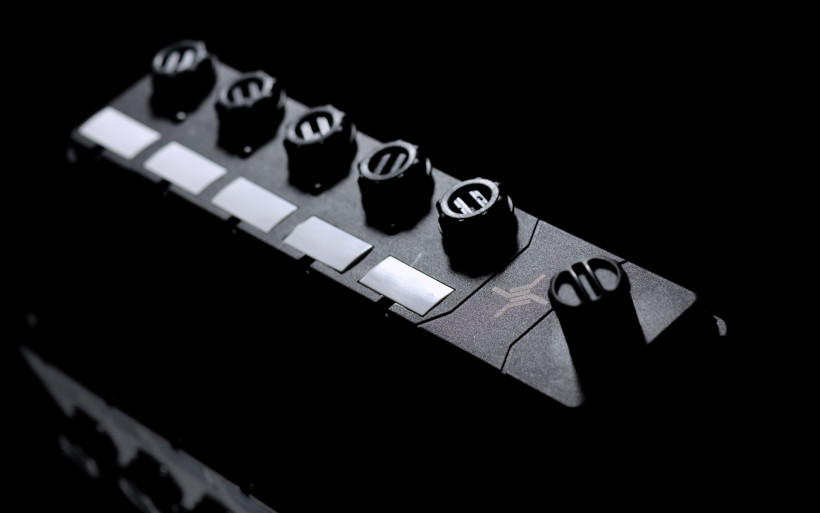 With the regular LAN throwaway on the job, everything located downstairs was all good to my ears. But past the very first in and out of the Japanese machine, the same range made by the regular RJ45 cable seemed hollow, texturally pale, less elastic and with reach nowhere near as low. Leonard Cohen’s “Nevermind”, Groove Armada’s “I See You Baby” and a fair chunk of tribal music by Wardruna and Heilung left no room for guesswork. The white LAN cable revealed itself as the true bass bottlenecking culprit. Interestingly, the inherently calmer M12 had this particular realm controlled tighter, speedier, more to the point and immediate. All this arrived at no cost, which is my favourite price to pay.
With the regular LAN throwaway on the job, everything located downstairs was all good to my ears. But past the very first in and out of the Japanese machine, the same range made by the regular RJ45 cable seemed hollow, texturally pale, less elastic and with reach nowhere near as low. Leonard Cohen’s “Nevermind”, Groove Armada’s “I See You Baby” and a fair chunk of tribal music by Wardruna and Heilung left no room for guesswork. The white LAN cable revealed itself as the true bass bottlenecking culprit. Interestingly, the inherently calmer M12 had this particular realm controlled tighter, speedier, more to the point and immediate. All this arrived at no cost, which is my favourite price to pay.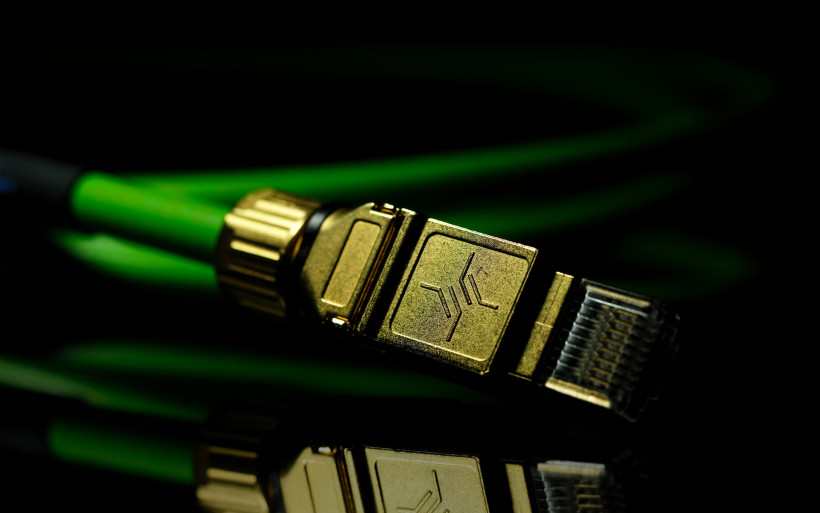 The second and fatal blow the M12 Switch Magic delivered via superior imaging. It all came down to how it wrapped air around vocal lines and instruments. This space more alive, three-dimensional, neatly decontaminated and insightful simply fleshed all shapes to make ‘em more easily visible in the process. That’s what I’d label as liquidity, with the Japanese switch all music simply flowed better, was more physical and felt better.
The second and fatal blow the M12 Switch Magic delivered via superior imaging. It all came down to how it wrapped air around vocal lines and instruments. This space more alive, three-dimensional, neatly decontaminated and insightful simply fleshed all shapes to make ‘em more easily visible in the process. That’s what I’d label as liquidity, with the Japanese switch all music simply flowed better, was more physical and felt better. At this point there was only one thing left to do. It was high time to put the M12 Switch Magic against my USB link daily exploited in-between my fidata HFAS-S10U and LampizatOr Pacific DAC. Once I wrapped my head around effectiveness of the Japanese switch, I simply needed to know how much better iFi audio’s micro iUSB3.0 fronted via iGalvanic3.0 and three connective Mercury cables were in comparison. If the whole USB chain was replaced with the generic USB cable, then the M12 was in use. To reverse the order, the switch off and regular RJ45 throwaway on duty had the USB setup back in its original place. This triangulation helped me to grasp which one of the two – USB or LAN hardware – was stronger in action. In short, the former had the upper hand still, though lesser than initially expected. Many trained ears would most likely agree that all USB additions netted more agile yet leaner result, whereas the M12’s input made music a bit slower paced, rounder and downstairs beefier. If I had to frame potency of compared solutions in numbers, then USB link would score 10, whereas Telegärtner’s bridge would land a firm 8.
At this point there was only one thing left to do. It was high time to put the M12 Switch Magic against my USB link daily exploited in-between my fidata HFAS-S10U and LampizatOr Pacific DAC. Once I wrapped my head around effectiveness of the Japanese switch, I simply needed to know how much better iFi audio’s micro iUSB3.0 fronted via iGalvanic3.0 and three connective Mercury cables were in comparison. If the whole USB chain was replaced with the generic USB cable, then the M12 was in use. To reverse the order, the switch off and regular RJ45 throwaway on duty had the USB setup back in its original place. This triangulation helped me to grasp which one of the two – USB or LAN hardware – was stronger in action. In short, the former had the upper hand still, though lesser than initially expected. Many trained ears would most likely agree that all USB additions netted more agile yet leaner result, whereas the M12’s input made music a bit slower paced, rounder and downstairs beefier. If I had to frame potency of compared solutions in numbers, then USB link would score 10, whereas Telegärtner’s bridge would land a firm 8.
Summary
The list of available tweaks to elevate performance of our key hardware is extensive to say the least. We can cherry-pick among cables, racks, platforms, power supply components, USB decrapifiers, room acoustic items and many more. In recent years also network components joined the show and proved me twice already how effective they can be; fidata HFLC leash several months ago and Telegärtner M12 Switch Magic just recently.
Today’s network industry escapee visually holds no audiophile jewelry status, its bling factor is pretty much non-existent. As a specialist product meant to do a very specific job it honestly doesn’t have to look hot, whereas petite size and ruggedized plastic enclosure make it a no frills utmost practical hardware built like a tank. Yes, its perceived value in the context of core switching functionality is ridiculously low, however such goods are all about sound quality increase and here’s where the M12 Switch Magic truly shines.
Just as any other audio sorter, this report’s costly item isn’t mandatory, hence the smart play would be to take it into consideration only after having all key components in check and very little wiggle room left to further elevate sound quality. If your LAN based rig is a case closed and fits the profile, then Telegärtner M12 Switch Magic’s potency not too far off my complete USB link says all there is to be said. Put shortly, this Japanese switch expressed its effectiveness impressively and audibly enough at my place to now encourage you to get familiar with it at yours. Time spent with it will be far from wasted, that’s a promise. ‘Till next time!
Associated equipment:
- Amplifiers: Accuphase P-4500
- Sources: LampizatOr Pacific (KR Audio T-100 + KR Audio 5U4G Ltd. Ed.)
- Speakers: Boenicke Audio W8
- Preamplifiers: Accuphase C-2150
- Transports: fidata HFAS-S10U
- USB: iFi audio iGalvanic3.0, micro iUSB3.0 and 3x Mercury cables
- Speaker cables: Audiomica Laboratory Celes Excellence, LessLoss C-MARC
- Interconnects: Audiomica Laboratory Erys Excellence
- Power components: Gigawatt PC-3 SE EVO+, Gigawatt PF-2 + Gigawatt LC-2 MK2 + Forza AudioWorks Noir Concept/Audiomica Laboratory Ness Excellence/LessLoss C-MARC
- Rack: Franc Audio Accesories Wood Block Rack
- Music: NativeDSD
Retail prices of reviewed components in EU (incl. VAT):
- Telegärtner M12 Switch Magic (+2x suitable 2.0m LAN cables): €2’550
Supplier: JCAT



